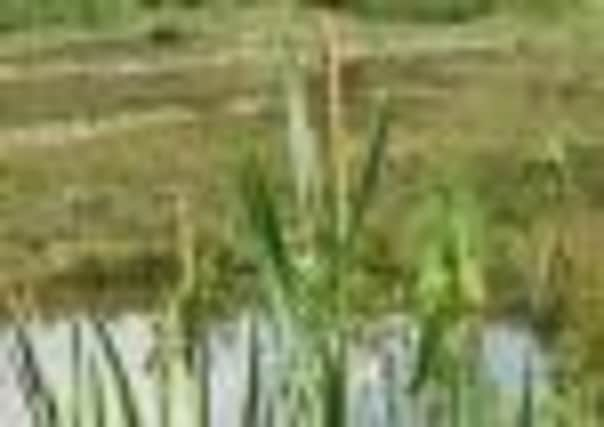Quarry scar heals to become an idyllic moorland garden


Disused quarries are often seen as a blot on the landscape – even when the growth of vegetation and softening effect of nature start to change them into less of an eyesore.
But today in many areas, nature is being given a helping hand in turning the old quarries from holes that fill with random vegetation – and sometimes unwanted waste – into green and pleasant gardens with trees carefully planted, wildflower meadows and pathways.
Advertisement
Hide AdAdvertisement
Hide AdStone from quarries helped to shape the landscape in West Yorkshire, providing the prime building material for houses, churches and public buildings, mostly hewn from local hillsides. Many of the quarry sites were up on the Pennine fringe – a source of strong stone for building purposes. Unfortunately ugly scars from excavations were left once the quarries closed.
In Saddleworth, part of the West Riding until local government re-organisation and now claimed to be in Yorkshire by half the population, the former Moorgate Quarry is receiving a makeover which should boost wildlife and make it into more of a tourist attraction rather than a site only visited by locals who are out for a stroll.
In these straitened times, many areas like neighbouring Kirklees have put schemes for quarry restoration to one side. But the Moorgate project is harnessing teams of voluntary labour and using a small pot of local authority cash to make more of what environmentalists consider to be a potential asset to the countryside.
Already the quarry has to some extent turned back to nature with a proliferation of pond life. Now Oldham Countryside Service rangers are supervising a programme with voluntary teams of local people, working to thin out overgrown woodland, plant wild grasses and enhance pond and plant life. The result will be a nature garden 800 feet up above the district’s main village of Uppermill – all achieved on a shoestring.
Advertisement
Hide AdAdvertisement
Hide AdMoorgate was the scene of massive excavations from the late 19th century until the 1930s. Back then wildlife was edged back to allow for access by machinery and the workforce.
The restoration project is officially giving the site back to Nature and trying to balance habitats.
Countryside ranger Doug Murray is at the forefront of efforts to enhance Moorgate’s rugged charm. He said: “If we do not do something with the landscape it will lose the quality it has already. The trees will take over and there will be just woodland, shading out other creatures which are already there.
“So our efforts through teams of volunteers will be to steer the quarry towards an even better habitat. Nature has done well already – it is incredible that there are so many species there.”
Advertisement
Hide AdAdvertisement
Hide AdHis colleague, apprentice ranger Charlie Baillie, who will be heavily involved in restoration, is enthusiastic about what Moorgate has to offer. “Quarry sites are going to be some of the most important biodiversity sites in the north of England.
“What we have at Moorgate is a post industrial site, an old mineral site which is already important for wildlife with peats and heathland. We already have 14 different species of dragonfly and related insects. There are four different kinds of frogs and toads and newts as well. A kestrel was seen up there this year and there are deer, foxes and rabbits.”
Work will continue until the winter and is expected to resume for a couple of months in the spring. Naturalist groups have already started to find Moorgate a happy hunting ground for field expeditions examining local wildlife.
Margaret Lambert of Saddleworth Naturalists said: “We have noticed the flora and the ponds are a good habitat for dragonflies.” But she added that the site was difficult to access up a stone track, which she hopes improvements will address this.
Advertisement
Hide AdAdvertisement
Hide AdA few miles away at Crosland Moor above Huddersfield, quarry company Johnsons has planted trees around the site of the working quarry which is very much appreciated by walkers. Elsewhere in the region, including the Old Ingleton Quarry and Giggleswick Quarry in the Dales, companies are also getting the eco-habit, converting the land they have excavated into a green and pleasant land with a profusion of wildflowers.
At Ingleton and Giggleswick the regrading of old tip areas and improvement of the old scars with clearing and seeding is a result of a partnership between Hanson Aggregates and the Dales National Park Authority, Natural England, Wildlife Trusts, Yorkshire and the Yorkshire Dales Millenium Trust.
When the work is completed at Moorgate, the impressive quarry cliffs will remain but visitors will enjoy an idyllic moorland garden.